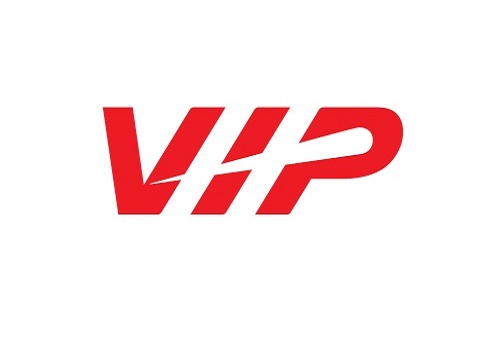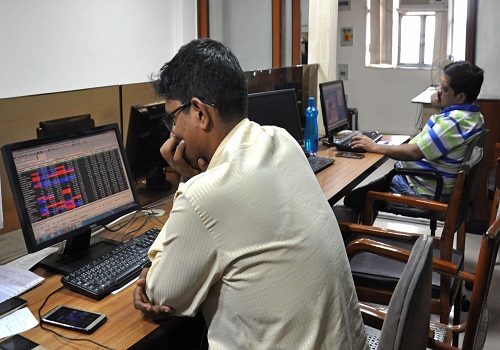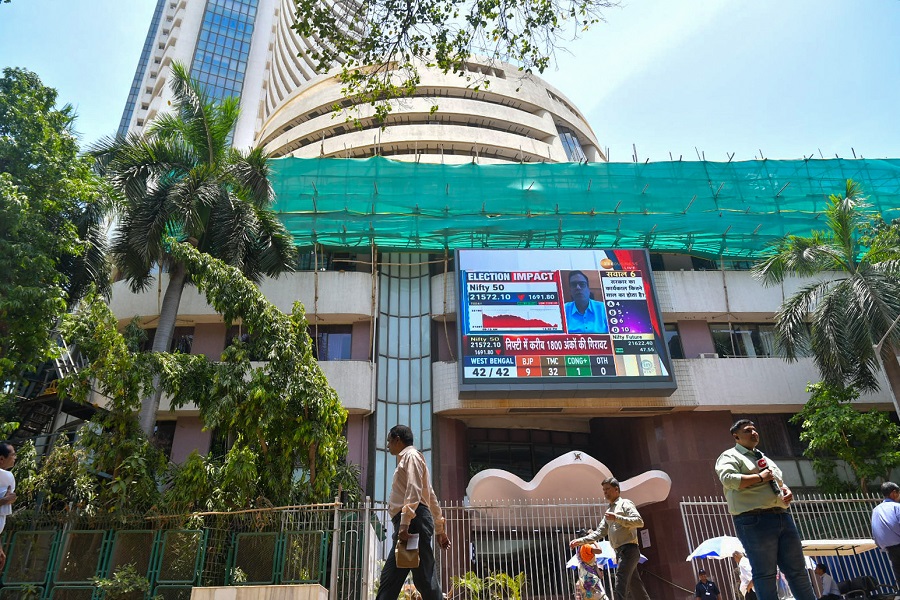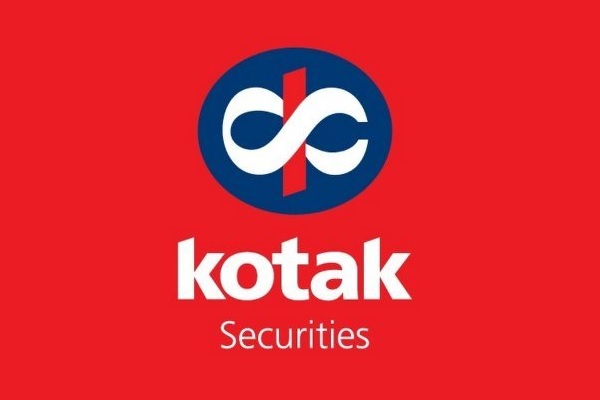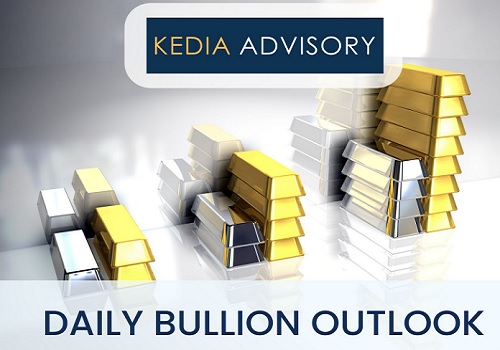Turmeric trading range for the day is 12614-13578 - Kedia Advisory

Gold
Gold prices climbed by 0.32% to settle at Rs.87,554, driven by ongoing uncertainty surrounding U.S. tariffs and their potential drag on global economic growth. U.S. President Donald Trump’s statement suggesting that not all tariffs would take effect on April 2 — with some countries potentially exempt — added a layer of unpredictability, supporting gold’s safe-haven appeal. Additionally, China’s gold imports via Hong Kong rose by 7.5% in February, reaching 14.851 metric tons from January’s 13.816 tons, reflecting stable demand from the world’s largest gold consumer. Investors are now focused on the upcoming U.S. Personal Consumption Expenditures data — the Federal Reserve’s preferred inflation gauge — for clues on potential rate cuts later this year. The Fed held rates steady but hinted at a possible quarter-percentage-point cut, which could further fuel gold’s appeal as lower interest rates typically weaken the dollar. In India, however, demand slumped as local prices surged to record highs, leading to discounts of up to $41 per ounce — the highest in over eight months. February gold imports are projected to plummet by 85% year-on-year, marking a 20-year low. The World Gold Council forecasts India’s 2025 gold demand to moderate to 700-800 metric tons, compared to last year’s nine-year high of 802.8 tons. Technically, the market is witnessing short covering, with open interest dropping by 16.86% to 7,641 contracts while prices rose Rs.276. Gold is now supported at Rs.87,280, with further downside possibly testing Rs.87,005. Resistance is seen at Rs.87,910, and a break above this level could push prices towards Rs.88,265.
Trading Ideas:
* Gold trading range for the day is 87005-88265.
* Gold gains amid persistent uncertainty over impending reciprocal U.S. tariffs and their impact on the global economy.
* U.S. President Trump said not all of his threatened levies would be imposed on April 2 and some countries may get breaks.
* China's total gold imports via Hong Kong in February rose 7.5% from January.
Silver
Silver prices surged by 1.7% to settle at Rs.99,153, driven by escalating trade uncertainties and broader economic concerns, prompting increased demand for safe-haven assets. U.S. President Donald Trump’s remarks about selective tariff implementations and his push for lower interest rates added to market volatility, further supporting silver’s bullish momentum. Meanwhile, the Federal Reserve maintained rates unchanged, with officials signaling no immediate need for adjustments despite growing expectations for two quarter-point cuts — one in June and another in September — with a rising possibility of a third cut in December. On the supply-demand front, the silver market is forecast to remain in deficit for the fifth consecutive year in 2025, with a shortfall of 149 million ounces — although this represents a 19% reduction from the previous year’s deficit, it remains historically significant. Industrial demand continues to lead, projected to hit record highs, surpassing 700 million ounces due to structural gains in green technologies and industrial applications. Technically, the market witnessed fresh buying, with open interest rising by 2.72% to 19,303 contracts while prices climbed Rs.1,660. Silver now has support at Rs.98,030, with a break below potentially testing Rs.96,915. On the upside, resistance is seen at Rs.99,970, and a move above this level could propel prices towards Rs.1,00,795.
Trading Ideas:
* Silver trading range for the day is 96915-100795.
* Silver gains as trade uncertainties and broader economic concerns fueled demand for safe-haven assets.
* President Donald Trump urged the Federal Reserve to lower interest rates.
* U.S. President Donald Trump said not all of his threatened levies would be imposed on April 2 and some countries might get breaks.
Crude Oil
Crude oil prices edged down by 0.2% to settle at Rs.5,919, driven by reports of a partial ceasefire agreement between Russia and Ukraine covering the Black Sea, which eased geopolitical tensions. However, the downside remained limited due to expectations of tighter global supply after the U.S. imposed a 25% tariff on countries importing Venezuelan crude. U.S. crude imports fell to 5.4 million barrels per day (bpd), the lowest since March 2023, while imports from Canada dropped to a two-year low of 3.1 million bpd. Crude inventories rose by 1.745 million barrels — exceeding the forecasted 1.1 million build — but stocks at Cushing, Oklahoma, declined by 1.009 million barrels. Gasoline inventories fell modestly by 0.527 million barrels, missing the expected 2 million draw, while distillate stocks posted a sharper-than-expected drop of 2.812 million barrels, highlighting tighter diesel and heating oil supply. The International Energy Agency (IEA) now projects a global oil surplus of 600,000 bpd for 2025, which could expand by another 400,000 bpd if OPEC+ fails to curb overproduction. The IEA also trimmed its 2025 demand growth forecast by 70,000 bpd, now expecting 1 million bpd growth driven mainly by Asia, particularly China’s petrochemical sector. Technically, the market saw long liquidation, with open interest dropping by 4.53% to 5,378 contracts. Crude oil now has support at Rs.5,877, with a break below potentially testing Rs.5,836. On the upside, resistance is at Rs.5,978, and a move above could push prices to Rs.6,038.
Trading Ideas:
* Crudeoil trading range for the day is 5836-6038.
* Crude oil dropped on reports Russia and Ukraine have agreed to a partial ceasefire covering the Black Sea.
* Trump says countries buying Venezuelan oil to face 25% tariff
* OPEC+ likely to raise oil output for a second month in May
Natural Gas
Natural gas prices dropped sharply by 3.42% to settle at Rs.330.6, driven by record-high output and forecasts for milder weather, which are expected to lower demand over the next two weeks. This drop in demand should allow utilities to continue replenishing storage, even though current gas stockpiles remain about 8% below seasonal norms after severe winter conditions in January and February led to significant withdrawals. Production in the Lower 48 U.S. states reached a record 106 billion cubic feet per day (bcfd) in March, surpassing February’s record of 105.1 bcfd. Meanwhile, Freeport LNG’s Texas export plant is gradually resuming flows after a lightning strike temporarily reduced operations. Weather projections suggest warmer-than-usual conditions through early April, contributing to a forecasted decline in overall gas demand from 107.9 bcfd this week to 104.0 bcfd next week. In storage data, U.S. utilities added 9 billion cubic feet of gas for the week ending March 14, 2025 — exceeding market expectations of a 3 bcf build. This marks the first storage increase since November 2024, led by a 28 bcf rise in the South Central region, offsetting withdrawals in other regions. However, total storage remains 26.8% below last year and 10% under the five-year average. Technically, the market faced fresh selling pressure, with open interest surging by 31.37% to 8,929 contracts. Natural gas has immediate support at Rs.324.8, with a break below potentially testing Rs.318.9. Resistance stands at Rs.341.2, and a move above could push prices toward Rs.351.7.
Trading Ideas:
* Naturalgas trading range for the day is 318.9-351.7.
* Natural gas slid on record output and forecasts for milder weather
* Natgas flows to Freeport LNG plant in Texas set to rise after lightning strike
* US LNG export feedgas set to hit monthly record in March
Copper
Copper prices climbed by 1.09% to settle at Rs.911.3, fueled by concerns over potential U.S. tariffs and new economic stimulus measures in China. President Trump’s executive order to investigate copper imports — citing national security risks — sparked fears of a 25% tariff. This drove traders to secure supplies early, pushing premiums higher and tightening global availability. Supply constraints were further amplified by limited mining investments and reduced refining capacity. On the demand side, the growing electric vehicle sector, advancements in AI, and the green energy transition are driving long-term copper consumption. China’s economic growth target of 5% and fresh stimulus efforts to boost domestic consumption are also expected to support copper demand. LME on-warrant copper stocks dropped to 117,775 tons — the lowest since June — after 8,200 tons were freshly canceled, with canceled stocks now making up 48% of total LME copper stocks. In the U.S., Comex copper stocks have fallen 7.5% since mid-February, signaling ongoing supply tightness. However, China’s copper inventories climbed towards 270,000 tons, tripling since the start of the year, fueled by increased domestic refining capacity, which also contributed to a 7.2% year-on-year decline in unwrought copper imports. Technically, the market is experiencing short covering, with open interest plummeting by 56.8% to 766 contracts. Copper is seeing support at Rs.903.2, with a further drop potentially testing Rs.894.9. On the upside, resistance is at Rs.918.5, and a breakout above this could push prices toward Rs.925.5.
Trading Ideas:
* Copper trading range for the day is 894.9-925.5.
* Copper surged driven by concerns over US tariffs and new stimulus measures in China.
* China’s GDP growth target was set at 5%, and the government is implementing stimulus measures to boost domestic consumption.
* The premium of the Comex contract over the LME one hit a record high of $1,346 per ton and was last at $1,290, or 13%.
Zinc
Zinc prices rose by 0.45% to settle at Rs.276, driven by mounting supply concerns and falling inventories. Shanghai Futures Exchange zinc stocks dropped by 6.9% from the previous week, highlighting tightening availability. Meanwhile, China’s zinc production for January and February increased by 1.8% year-on-year to 1.13 million metric tons, showing smelters’ willingness to ramp up output despite market pressures. However, production cuts at Nyrstar’s Hobart smelter in Australia, which plans to reduce output by 25% starting in April due to financial challenges, added to bullish sentiment. The Hobart smelter’s annual capacity of 260,000 metric tons will take a notable hit, contributing to global supply worries. LME on-warrant zinc stocks also plunged to 94,700 tons — their lowest since November 2023 — following fresh cancellations of 42,575 tons. Globally, mined zinc production declined for the third consecutive year in 2024, with China’s refined zinc output falling 7% due to slower processing rates. Additionally, Alaska’s Red Dog Mine, responsible for 10% of global output, is set to scale back production in 2025 as ore depletion nears. The global zinc market registered a 10,000 metric ton deficit in January, down from December’s 41,100-ton shortfall. Technically, the market is experiencing short covering, with open interest dropping sharply by 48.04% to settle at 437 contracts. Zinc has support at Rs.274.8, with a potential downside test at Rs.273.5. On the upside, resistance is at Rs.277.3, and a breakout above this level could push prices towards Rs.278.5.
Trading Ideas:
* Zinc trading range for the day is 273.5-278.5.
* Zinc prices gained as supply concerns intensified and SHFE inventories dropped 6.9%
* Nyrstar announced 25% production cuts at its Hobart zinc operations in Australia from April, sending prices higher.
* China’s zinc production in January and February rose 1.8% from the prior year to around 1.13 million metric tons
Aluminium
Aluminium prices slid by 1.63% to settle at Rs.249.95, driven by improved raw material availability. Major alumina producers in Guinea, Australia, and China ramped up capacity after last year’s disruptions, pushing alumina prices near one-year lows and boosting processing rates for smelters. However, finished aluminium supply could face constraints ahead. Despite China producing a record 44 million tons of aluminium in 2024, output growth is expected to slow due to Beijing’s 45 million ton production cap, aimed at controlling oversupply and reducing carbon emissions. Trade data showed subdued aluminium exports from China after the removal of tax rebates, prompting local producers to prioritize domestic sales, supporting foreign benchmark prices. In February 2025, China’s aluminium production increased marginally by 0.4% year-on-year but dropped by 95,000 metric tons from January, reflecting the impact of production resumptions and replacement projects amid recovering profitability. JP Morgan forecasts a significant global aluminium market deficit exceeding 600,000 metric tons by 2025, fueled by supply slowdowns, particularly from China. The International Aluminium Institute reported a 2.7% year-on-year rise in global primary aluminium output to 6.252 million tons in January. Technically, aluminium is in long liquidation, with open interest plunging by 39.38% to settle at 699 contracts. The metal now has support at Rs.248, with a further downside test possible at Rs.246.1. Resistance is seen at Rs.253.2, and a breakout could push prices toward Rs.256.5.
Trading Ideas:
* Aluminium trading range for the day is 246.1-256.5.
* Aluminium prices dropped amid the improved availability for raw materials.
* Major alumina producers in Guinea, Australia, and China added new capacity to recover from series of disruptions last year.
* Global aluminium output falls 0.9% year on year in February – IAI
Cottoncandy
Cottoncandy prices slipped by 0.27% to settle at Rs.52,560, driven by rising supplies and sluggish mill buying, as mills remain well-stocked without immediate procurement needs. The Cotton Association of India (CAI) cut its 2024-25 crop estimate by 2% to 295.30 lakh bales (170 kg each), down from 301.75 lakh bales, mainly due to lower-than-expected yields in central India. A notable 10% decline in acreage is set to reduce this year’s output from 327.45 lakh bales last season. The government’s second advance estimate also trimmed projections to 294.25 lakh bales, reflecting a 1.5% reduction. Regionally, CAI forecasts Gujarat’s production to drop by 4 lakh bales and Maharashtra’s by 3 lakh bales, while Odisha may see a modest rise of 0.55 lakh bales. Imports are projected to double to 32 lakh bales in 2024-25, with 22 lakh bales already imported by February-end, reflecting a strategic move to balance domestic shortages. Despite steady domestic consumption, pegged at 315 lakh bales, exports are expected to fall by 40% to 17 lakh bales, leading to lower closing stocks at 23.49 lakh bales (down from 30.19 lakh bales last year). Globally, Brazil’s production is forecasted to rise 1.6% to 3.7616 million tons, driven by a 4.8% expansion in planting areas. Technically, the market is under long liquidation, with open interest down 34.44% to 59 contracts. Support is seen at Rs.52,440, with a further drop potentially testing Rs.52,330. Resistance lies at Rs.52,720, and a breakout could push prices toward Rs.52,890.
Trading Ideas:
* Cottoncandy trading range for the day is 52330-52890.
* Cotton dropped due to a substantial increase in supply and limited mill buying.
* Mills are well-stocked and are not facing immediate purchasing requirements.
* CAI has further reduced its 2024-25 crop estimate by 2 per cent to 295.30 lakh bales
* In Rajkot, a major spot market, the price ended at 25453.45 Rupees dropped by -0.51 percent.
Turmeric
Turmeric prices rose by 1.18% to settle at 13,208, driven by lower-than-expected arrivals and strong buying interest. The market remained supported by robust export demand, with exports reaching a four-year high, surpassing 2020's volume of 1.75 lakh tonnes. Between April and December 2024, turmeric exports surged by 13% to 136,921 tonnes compared to 121,170 tonnes during the same period in 2023. December alone saw a significant 46.94% year-on-year rise, with exports hitting 15,319.82 tonnes. On the production side, despite an increase in turmeric acreage — rising by 10% to 3.3 lakh hectares — untimely rains have impacted yields. New crop output is projected to decline by 10-15%, particularly in Nanded, where small rhizomes and crop rots are prevalent. This could limit production growth, keeping it around last year’s 10.75 lakh tonnes or fluctuating within a narrow 3-5% range. Imports also showed an interesting trend, rising sharply by 84.35% to 19,644 tonnes from April to December 2024, compared to 10,655 tonnes in 2023. However, December imports fell significantly by 44.66% compared to November, reflecting lower domestic demand for foreign turmeric due to ample local supply. Technically, the turmeric market is in a short covering phase, evidenced by a 23.8% drop in open interest to 7,475 contracts while prices rose by Rs.154. Support is established at Rs.12,910, with a further downside possible to Rs.12,614. On the upside, resistance is seen at Rs.13,392, and a breakout above this level could push prices towards Rs.13,578.
Trading Ideas:
* Turmeric trading range for the day is 12614-13578.
* Turmeric gains as lower-than-expected arrivals restricted supplies, leading to strong buying interest.
* Support also seen amid concerns over slow growth of rhizomes and low yield estimates persist.
* Meanwhile, exports continued to pick up in the second half of 2024, with shipments reaching a four-year high.
* In Nizamabad, a major spot market, the price ended at 13353.65 Rupees dropped by -0.56 percent.
Jeera
Jeera prices climbed by 1.15% to settle at Rs.22,340, driven by strong domestic demand and continued export activity, particularly from Gulf countries. Supply constraints remain a key factor, with limited arrivals from Rajasthan and a delayed new crop in Gujarat — about a month behind schedule due to unfavorable weather. Despite this, upside potential appears limited as existing stocks continue to meet current demand. Farmers still hold approximately 20 lakh bags of jeera, though only 3-4 lakh bags are expected to be traded by season’s end, leaving a substantial carry-forward stock of 16 lakh bags. Production levels for the 2023-24 season are projected to stay strong, reaching 8.6 lakh tonnes from 11.87 lakh hectares, significantly up from last year’s 5.77 lakh tonnes from 9.37 lakh hectares, according to Spices Board data. Jeera exports surged 70.72% from April to December 2024, totaling 165,084 tonnes compared to 96,701 tonnes in the same period of 2023. December exports alone saw a sharp rise of 56.45% over November. Technically, jeera remains under short covering, with open interest dropping 4.19% to 3,228 contracts while prices increased by Rs.255. Support is seen at Rs.22,110, with a further dip potentially testing Rs.21,870. On the upside, resistance is expected at Rs.22,480, and a break above this level could push prices toward Rs.22,610.
Trading Ideas:
* Jeera trading range for the day is 21870-22610.
* Jeera gains amid price support from domestic demand, as well as export activity.
* Only 3-4 lakh bags are expected to be traded by the end of the season, leaving a carry-forward stock of about 16 lakh bags.
* However downside seen limited amid price support from domestic demand, as well as export activity from Gulf countries.
* In Unjha, a major spot market, the price ended at 21991.85 Rupees dropped by -0.01 percent.
Views express by all participants are for information & academic purpose only. Kindly read disclaimer before referring below views

